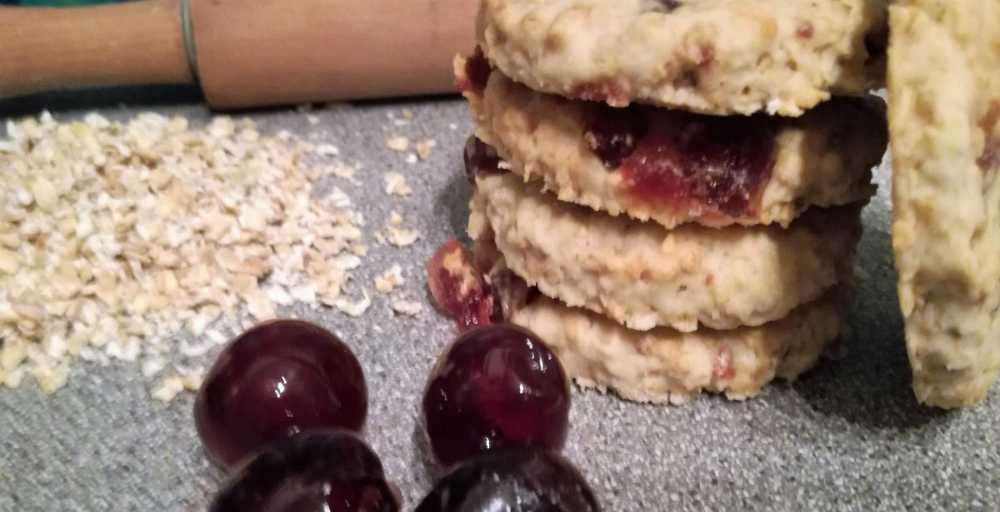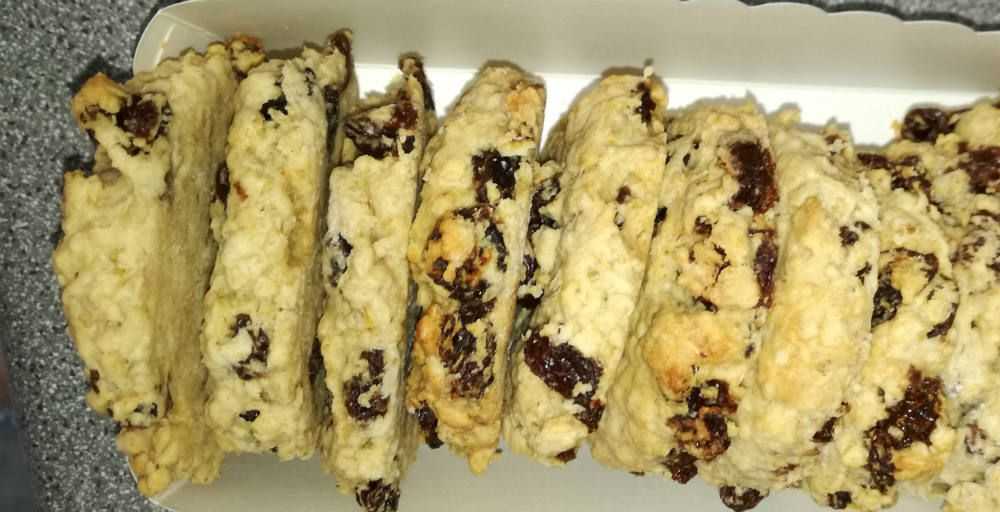I have been thinking about alternatives for the cookies which I made the other day using up ingredients that I had available in the kitchen. My children absolutely loved these cookies as not a crumb was left.
When I got to thinking about different flavours I started to think of the ingredients and the allergens they contained along with ways to improve this recipe. When I had my market stall I always had a list of what ingredients could cause allergic reactions for the consumer to see. On each individual packed bake I had a list of which allergens were present in the product as well as the ingredient list. This had to be added by law but had been something I had been doing for a long time.
Today I decided to make the cookies again for the children to take in their packed lunches. However I was going to try adding currants and cherries to see how they turned out. As I was adding sweet dried fruit I was going to cut down on the sugar used in the recipe. The dried fruit would give the oatmeal cookies a different texture and alter the flavour of these quite plain digestive style cookies.
The oat cookies are a good source of fibre. in particular, beta gluten which is known to lower cholesterol. There is also some evidence that there is a compound in oats which is linked to stopping fat formation in the arteries, ie, actively cleans the arteries which in turn can reduce the risk of heart disease and cancer.
Oats are an excellent ingredient to include in a child’s diet in any shape or form as they have been shown to lower the risk of obesity. From experience, I have found that not all children will eat porridge as part of their normal balanced diet, but using the oats in cookies and flapjack recipes where I have lowered the sugar content has encouraged them to eat oats.
Adding dried fruit into the recipe would have several benefits to the diet:-
- add more fibre to the recipe, which in turn would lower the risk of heart disease, obesity and cancer.
- the sugars which are more concentrated in the dried fruit would help to add sweetness to the cookies when removing some of the sugar. I actually removed a third of the sugar from the original recipe and the dried fruit helped to compensate for this with their natural sweetness.
- as these dried fruits have more concentrated content of various vitamins and minerals , including them in the recipe has more benefits. The iron, vitamin E, niacin, potassium and calcium content are quite high.
- dried fruit does have quite a high calorie content but very little fat.
These dried ingredients use sulphur dioxide as a preservative which can cause an allergic reaction in some people. A way to avoid this possibility is to use frozen fruit and then know that the cookies are safe for all consumers. The problem I feel for this would be the moisture the frozen fruit would add to the recipe and the final texture of the fruit on baking.
There are other alternatives which can be made to this basic recipe such as
- using wholemeal flour instead of self raising flour. This would increase the fibre content some more but it may alter the texture of the final cookie ,ie, making it more tough , so perhaps not replace all the flour.
- another idea would be to make the cookies with gluten free flour. Again something to try out at a later date.
Per cookie calories 124, sugar 2.3g, fibre 1.3g. These are just some of the nutritional information about these cookies.
Any questions about this idea please feel free to comment. I will be sharing the recipe in my recipe book which will be available very soon.


